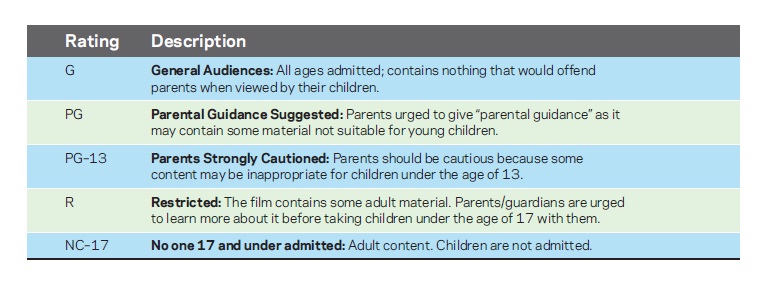Chapter 16 Visual Activities 2
Chapter 16 Visual Activities 2
CHAPTER 16: LEGAL CONTROLS AND FREEDOM OF EXPRESSION
Focus Questions
What ratings do most of the movies you view have? Does the rating affect your opinion of a film?
The Voluntary Movie Rating System

1 of 2
Short-Answer Questions
Question
1.
The current voluntary movie rating system developed in the late 1960s after discontent mounted over movie content. In 1968, Jack Valenti established an industry board to rate movies, and eventually the G, PG, R, and X ratings emerged as guideposts for the suitability of films for various age groups. In 1972, the X rating was dropped (and was co-opted by the pornographic film industry), but a similar rating of NC-17 was developed in 1990 for films with sexual content that were not pornographic in nature. In 1984, the Motion Picture Association of America (MPAA) added the PG-13 rating to distinguish slightly higher levels of violence or adult themes in movies that might otherwise qualify as PG-rated films.
2 of 2
Question
2. How does an NC-17 rating affect a movie’s commercial viability?
The NC-17 rating has not proved commercially viable for several reasons: Many theater chains refuse to carry NC-17 movies, and many newspapers and other advertising outlets refuse to carry ads for NC-17 films. Currently, distributors avoid releasing films with that rating, preferring to label such films “unrated” or to cut the film to earn an R rating, so very few films even come out with an NC-17 rating.
[Leave] [Close]